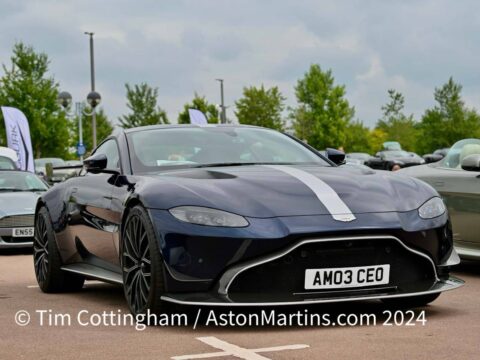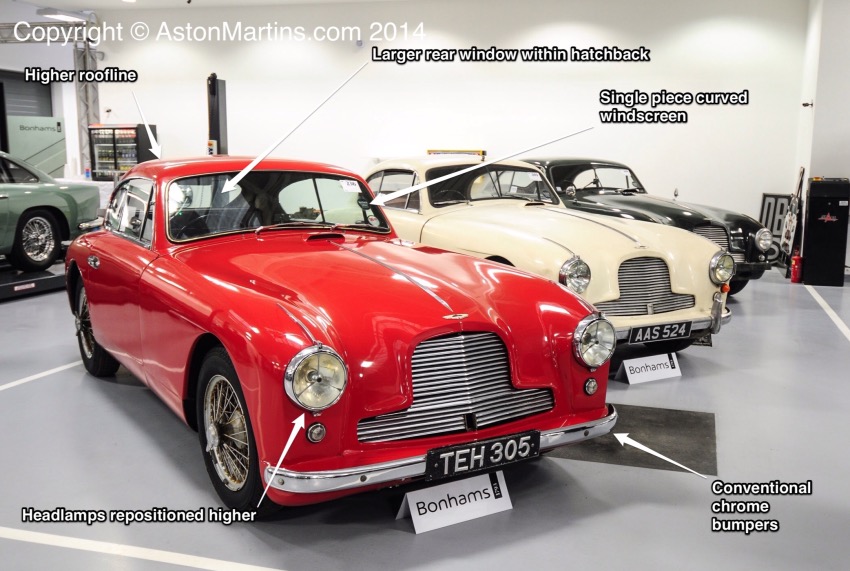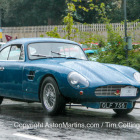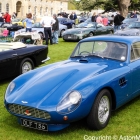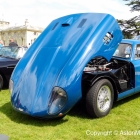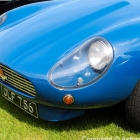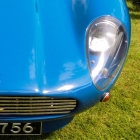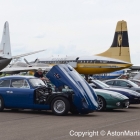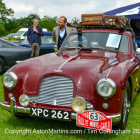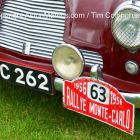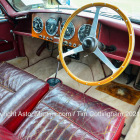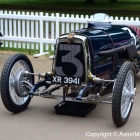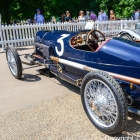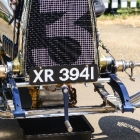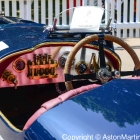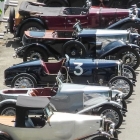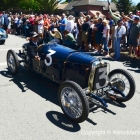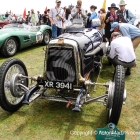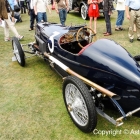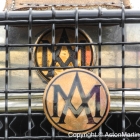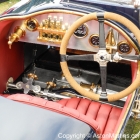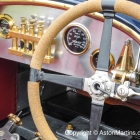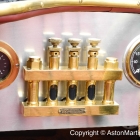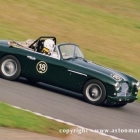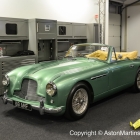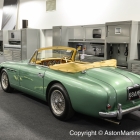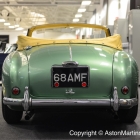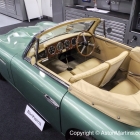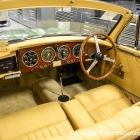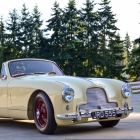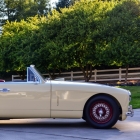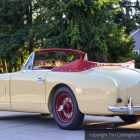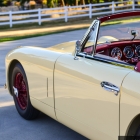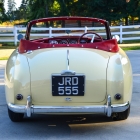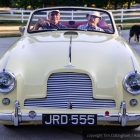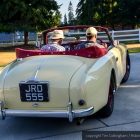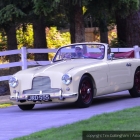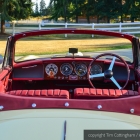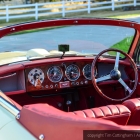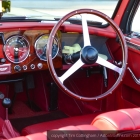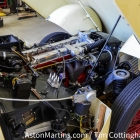B&M Side Valve (3 seater)
- 01/02/2013This particular car has a very interesting history as it has been rescued from scrap yards three times in it’s life. The current attractive body, whilst not the original, is correct for the car. The engine is capable of delivering 38 bhp, enough for B&M to advertise its top speed as 72 mph. Sports models had an improved output of 45 bhp but in general, the side valve engine was not powerful enough to compete with more modern engines and Aston Martin went on to develop the 16 valve twin-cam.
B&M Side Valve Saloon
- 24/09/2013Image provided with the kind assistance of the Aston Martin Heritage Trust
B&M Side Valve (4 seater tourer)
- 01/02/2013These early cars all had the same four cylinder 1486 cc side valve engine with what at the time would have been a heady power output of 38 bhp allowing for a top speed in the region of 77 mph. The price in 1923 with this 4 seater touring coachwork was £725, quite a considerable sum for such a car at the time.
DB2/4 saloon
- 01/02/2013The roofline of the DB2/4 was raised so as to provide extra headroom for rear seat passengers. Also the front windscreen became a single piece full width curved affair. 50 years after it was first seen, the hatchback returned to the Aston Martin range on the AMV8 Vantage concept and into production with the Gaydon built V8 Vantage.
As well as the useful hatchback, the DB2/4 can be distinguished from the earlier car by more substantial bumpers with over-riders. That said, its quite common to see DB2/4’s modified for the track without bumpers fitted. Also the headlamps were repositioned slightly higher than on early DB2’s as demanded by new safety regulations.
Initially the DB2/4 had, as standard, the 2.6 litre engine (2580 cc, VB6E/) in Vantage tune producing 125 bhp previously an option on the outgoing DB2. Then from mid 1954, an enlarged 2.9 litre (2922 cc, VB6/J) engine was introduced giving a much improved 140 bhp. Once fitted with the larger capacity engine, the 2.9 litre DB2/4 was capable of a genuine 120mph top speed.
While the DB2/4 is regarded as a Feltham car, they were actually built in many different places. The rolling chassis, engines and other parts were made in the David Brown Industries factories at Meltham Mill near Huddersfield and the nearby tractor engine factory at Farsley, both in the county of Yorkshire. David Brown was a Yorkshireman himself of course. The coachwork was assembled by Mulliners of Birmingham from panels made by such people as Airflow Streamline in Northampton. Then the cars eventually arrived at Feltham for final finishing. However, by 1955 the cars were assembled almost entirely at Farsley in West Yorkshire. Fully trimmed bodies from coach builders, Mulliners were fitted to the rolling chassis and finished on a production line alongside the David Brown tractors.
The car below is a bit of a mystery. At some time during the 1960’s it has had its bonnet professionally replaced in the style of the later works DB3S.
In total, 451 DB2/4 saloons were built before the model was replaced by the DB2/4 Mark II, late in 1955.
B&M Side Valve (2/4 seater) by Albany
- 08/04/2014B&M Twin cam 16 valve GP cars
- 01/02/2013Pictured below is chassis 1934, especially built for Captain George Eyston which he entered the JCC 200 mile race at Brooklands where he finished 3rd and the BARC Whitsun race where he finished 1st. The next year, he entered the first British Grand Prix at Brooklands although the car retired with a broken fuel pump. Chassis 1934 has just completed a restoration and was shown at the Kensington Palace Centenary Celebrations and the 2013 Concours d’Elegence at Pebble Beach.
Lionel Martin probably concentrated too much effort on racing and not sufficient on the production of Aston Martins. A total of perhaps only 61 cars were built during this era made up of 7 team cars and 54 production cars, insufficient to save the company until the receiver came in 1925 and the demise of Aston Martin looked certain; the first of many such occasions.
DB2/4 Team Rally Cars
- 01/02/201354DMF (LML/857) was driven by the young Peter Collins and Graham Whitehead and achieved 11th in class. 55DMF (LML/784) was driven by Maurice Gatsonides, the winning driver from the 1953, partnered by Marcel Becquart. Gatsonides would have almost certainly won had he not missed a secret checkpoint – they eventually came in 7th and 1st in class. 56DMF (LML/855) was driven by Reg Parnell, co-driven by Louis Klementaski and came 17th in class. As third and fourth places were won by privately entered DB2/4’s, Aston Martin were awarded the team prize.
Louis Klementaski was, at the time the official Aston Martin works photographer considered the greatest motor racing photographer of the time, if not ever. Maurice Gatsonides is also famous for another reason: he went on to develop the Gatso speed camera which, ironically has caught out many an over enthusiastic Aston Martin driver.
Later that year, the two entries for the Mille Miglia (#54 and #56) both dropped out due to clutch failure in the early stages.
55DMF was offered as a star lot at the Bonhams & Brookes/AML auction at the Newport Pagnell factory in May 2001.
DB2/4 Drophead Coupe
- 01/02/2013Initially, the DB2/4’s were first sold with the 2.6 litre VB6E/ engine in Vantage tune as first seen as an option on the DB2, which offered peak power of 125 bhp. From April 1954 until the end of DB2/4 production in October 1955, the 2.9 litre VB6J/ engine with 140 bhp as fitted as standard.
It is believed that 102 DB2/4 Drophead Coupes were built over two years with more than half in right hand drive for the British market. The left hand drive examples are highly desirable partly due to their rarity and the fact that most countries in the world drive on the right.
I’m often asked about the Aston Martin that was driven by Tippi Hedren in the 1963 Alfred Hitchcock film, ‘The Birds’. Well, the AMHT Register tells us that it was a DB2/4 Drophead coupe, chassis number LML/944 that was loaned to Universal Studios in 1963 especially for the film. This famous car still exists and lives in a private collection in the USA.
The DB2/4 Drophead was replaced by the updated DB2/4 Mark II in 1955, the first open Aston Martin with coachwork by Tickfords in Newport Pagnell.
DB2/4 Disco Volante
- 01/02/2013A posting on the AMOC forum by someone who claims to have used the car may shed some light on this mystery. The contributor has stated that he had use of the car through work in the late 1950’s. Apparently the driver parked the car up in a London street whilst he served a little time in prison. During that time, a month or so, the open car was vandalised and then taken away by the authorities, perhaps to be scrapped. I have no way what-so-ever of checking this story but it could well be true. I very very much hope this car will resurface one day but I also fear that it, sadly, may no longer exist.

